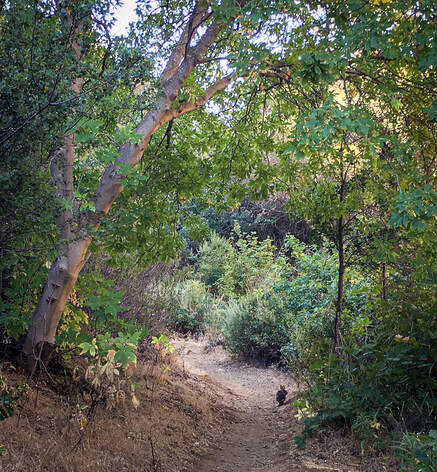|
The idea of urban rewilding is catching on all over the world. Green spaces are sprouting up everywhere—in pocket parks, on rooftops, along busy roads—as more and more of us understand the need to restore all kinds of ecosystems, including the ones within our cities.
Restoring forests is especially important. We need mature, functioning forests to draw down carbon, cool the air, restore habitat for wildlife—and for many other reasons. But when left to the process of natural succession, forests can take 150 to 200 years to reach maturity. Fortunately, thanks to the work of Dr. Akira Miyawaki, mature, native-like forests can be created on degraded land in just 30 to 50 years. Dr. Miyawaki’s innovation, essentially, was to plant native canopy species very densely, along with other, smaller native species. A Miyawaki mini-forest can be as small as six parking spaces—or much bigger. Weeding and watering are needed only for the first few years. In the last twenty years, mini-forests planted with the Miyawaki method have sprouted across the globe, including the UK, Europe, and Canada. Mini-forests are growing in Western Australia, which, like California, has suffered the climate challenges of heat, drought, and wildfire. Pocket Forests WA, a Perth-based nonprofit, has started new mini-forests in schoolyards, where children learn about Nature by planting and tending the young trees. Their website offers this brief explanation of Dr. Miyawaki’s methods. In the US, mini-forests are just catching on across the country, from a park on a former landfill in Cambridge, MA, to a vineyard on California’s central coast. In suburban Tucson, AZ, the Rose Community Forest will create a haven for wildlife and a peaceful place for people to enjoy Nature. Seattle’s South Park Forest is sited amid low-income communities in an industrialized, polluted part of the city. The mini-forest there will heal the land and make the air more breathable. And mini-forests offer other benefits: for example, they can be a screen protecting a community from freeway noise or an unsightly view—and they can provide cooling shade to combat the heat-island effect in neighborhoods that don’t have enough trees. A book by Hannah Lewis, Mini-Forest Revolution: Using the Miyawaki Method to Rapidly Rewild the World, is an invaluable tool for anyone wishing to create a mini-forest. It provides not only a detailed description of the method, but also many case studies of projects in a wide variety of environments. One chapter is a field guide covering the essential steps:
Miyawaki-style mini-forests have been planted in five Berkeley schoolyards, but Contra Costa has yet to plant its first one. That needs to change. The City of Concord, like many US cities and towns, is moving to plant hundreds of trees in parks and along streets. But a forest is much, much more than a group of trees, and a native-like mini-forest offers many more ecological benefits compared to trees planted in isolation. We aim to work with the City of Concord to plant a Miyawaki mini-forest on public land. To restore our watershed and ensure a livable future for Concord, the time for planting is now. But to make it happen, your help is needed! To learn more, please shoot an email to [email protected]. -Friends of Concord Creeks |
Walnut Creek Watershed Council
|
Copyright 2024 Walnut Creek Watershed Council. All Rights Reserved.
Many images courtesy of the Contra Costa Resource Conservation District. |


 RSS Feed
RSS Feed